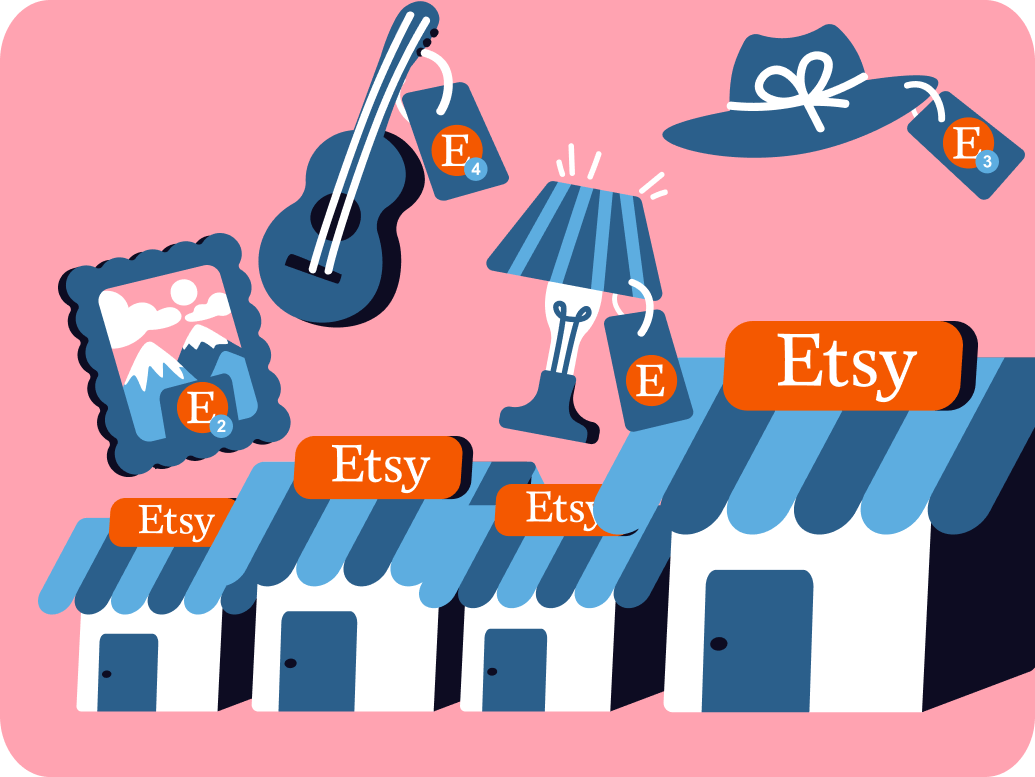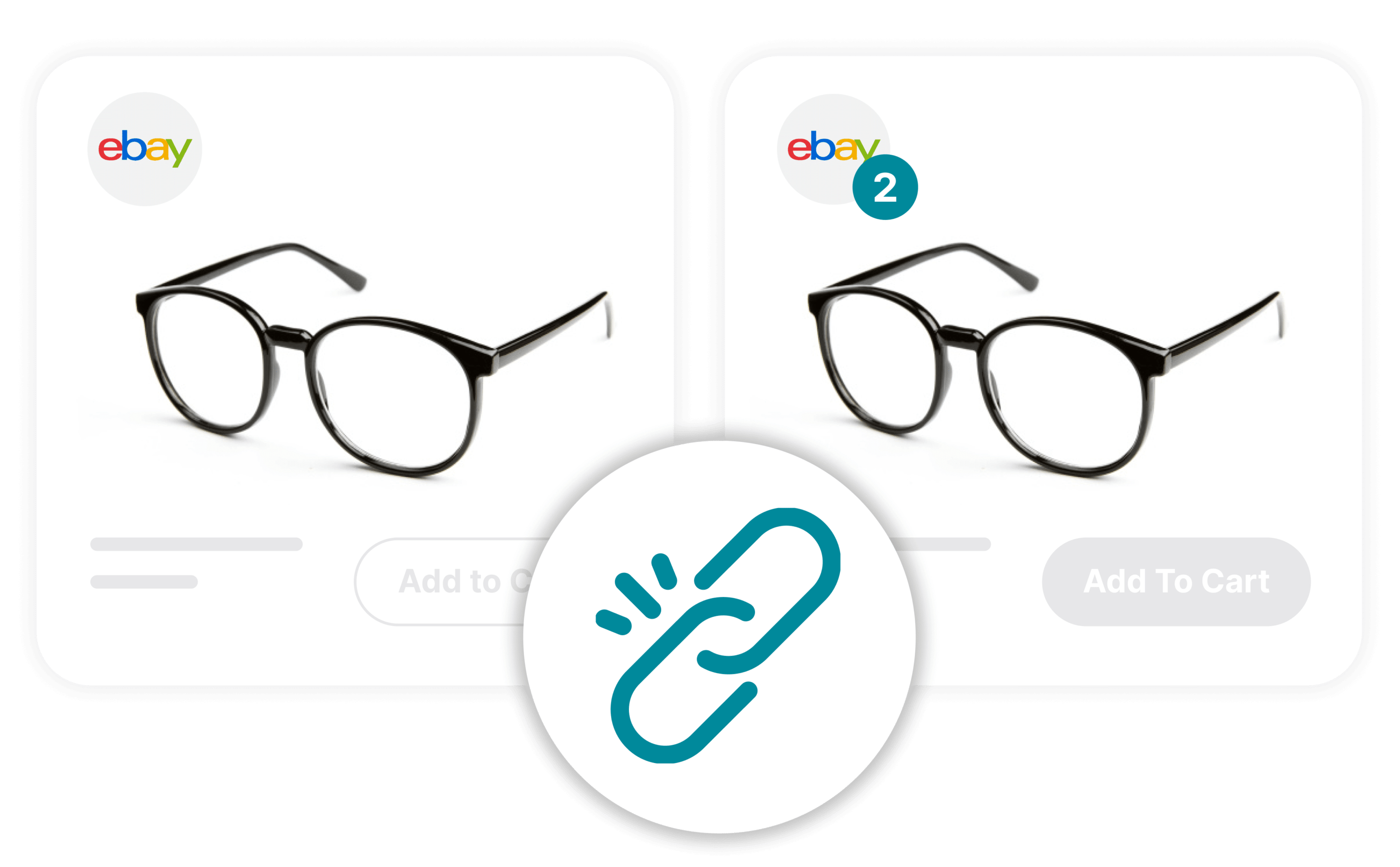Last update March 11, 2025
How to sell vintage online
Vintage is more than just a trend, it’s a movement. Consumers are increasingly looking for unique, sustainable, and high-quality products, making vintage one of the most profitable niches in e-commerce, marketplace, and social media.
But with more sellers entering the market, success requires more than just great inventory. You need a little strategy, a smart sales approach, and the right tools to make your life easier.
Want to sell on multiple Etsy stores but don’t have time?
Try Nembol for free: enjoy a 14-day trial.
No credit card required.

What sells best in the vintage market?
If you are considering selling vintage online, it is a good idea to focus on categories that consistently register good results. Fashion and accessories remain among the most popular choices: retro clothing, rare designer pieces, and vintage sneakers are always in high demand.
Vintage sellers can capitalize on a variety of other kinds of products:
- Home Decor & Furniture – Mid-century modern, antique wooden furniture, and retro decor items appeal to interior enthusiasts.
- Collectibles & Memorabilia – Vinyl records, old cameras, and pop culture memorabilia have dedicated fan bases.
- Jewelry & Watches – Classic timepieces and statement jewelry hold both sentimental and monetary value.
- Electronics & Gadgets – Vintage gaming consoles, typewriters, and radios attract collectors and tech lovers alike.
Want to sync your eBay stores but don’t have time?
Try Nembol for free: enjoy a 14-day trial.
No credit card required.

Steps to selling vintage online
- Build your inventory
Sourcing quality vintage pieces is key. Start by checking your own inventory or asking family members if they have items to sell. Beyond that, explore thrift stores, estate sales, flea markets, online platforms like eBay and Etsy, and even international vintage markets.
- Choose the right selling platforms
Decide where to sell based on your target audience. Options include:
- Marketplaces (Etsy, eBay) for access to a large customer base.
- Your own website for brand control and better profit margins.
- Social media (Instagram, TikTok) for direct engagement and niche marketing.
- Take high-quality photos
Vintage shoppers rely on visuals to assess authenticity and condition. Use natural lighting, multiple angles, and close-ups of key details.
- Write compelling descriptions
A great product description includes the item’s decade, brand (if available), designer, details, dimensions, and any notable features. Being transparent about conditions builds trust.
- Set a good price
Research similar listings to determine a fair price, factoring in rarity, demand, and condition. Be flexible with pricing for slower-moving items while keeping high-value pieces competitive.
- Handle shipping & packaging
Use protective packaging and offer different shipping options. Vintage buyers appreciate careful handling, consider eco-friendly wrapping and include a thank-you note for a personal touch.
Finding the best platforms to sell vintage online
With so many options out there, finding the right sales platform can make all the difference. Online marketplaces like Etsy and eBay are great if you’re looking for a quick and easy way to reach an existing audience without much setup.
But if you want complete control over your branding and better profit margins, building your own online store with Shopify, PrestaShop, or WooCommerce could be the way to go.
Social media platforms like Instagram, Facebook Pages, TikTok Shop, and Pinterest also offer a direct connection with customers and the potential for organic reach via Search Engines like Google, but keeping up on social requires regular content creation to stay relevant.
The good news is that Nembol serves all platform above, and lets you create or edit your listings just once for all, and controls stock automatically. Read on!

Selling vintage on Etsy vs eBay
Choosing between Etsy and eBay for selling vintage depends on what you’re looking for. Etsy is great for sellers who focus on curated, unique, and handmade-style vintage items. It has lower seller fees and attracts buyers looking for an authentic, boutique-like experience, offered by independent sellers.
eBay, on the other hand, allows you to sell almost anything, including bulk vintage items, electronics, and collectibles. It has no listing fee for the first 250 items and offers an auction feature, which can be a great way to sell quickly, but also risky if bids stay low. eBay has a larger customer base looking for good deals, while Etsy buyers are often willing to pay more for unique finds.
Both platforms have their pros and cons, but you don’t have to choose just one. With Nembol, you can list your vintage inventory on both Etsy and eBay at the same time, keeping everything in sync effortlessly.
How to sell vintage items on TikTok Shop
TikTok Shop is a modern, powerful tool for selling vintage, especially if you love creating fun and engaging content. Short videos, styling tips, and live selling can help you showcase your items and attract buyers.
TikTok’s algorithm can also boost visibility if you use trending sounds and hashtags. It’s a great way to reach a younger audience and create a strong brand presence. To make things easier, you can use Nembol to connect TikTok Shop with your other selling platforms, to write or edit listings just once, and keep everything in sync.
TikTok Shop, allows sellers to connect with content creators. Sellers will provide products, and Content Creators will “create” content around them to enable sales.

How to sell vintage multichannel
Selling across multiple channels boosts visibility but may create challenges if you don’t let yourself be helped by synchronization technology.
Keeping inventory updated across platforms, managing orders from different sources, and optimizing pricing and product descriptions efficiently can become overwhelming without the right tools.
Tips for selling vintage items online
A strong brand identity is key to standing out in the crowded vintage market. Whether you specialize in ’90s streetwear or antique furniture, define your niche and aesthetic. But this is not the only thing to pay attention to.
- Leverage online marketplaces – Use platforms like Etsy and eBay to gain visibility while directing traffic to your own ecommerce store.
- Diversify inventory – Offer a mix of rare collectibles, affordable fashion, and high-end vintage pieces.
- Highlight authenticity – Provide detailed descriptions, original tags, and provenance to increase buyer trust.
- Join vintage communities – Engage with groups on Instagram, Reddit, and Facebook to connect with potential customers.
- Offer multiple price points – Cater to different budgets by selling both statement pieces and affordable finds.
- Automate sales processes – Use tools like Nembol to create and edit listings just once for multiple platforms, and sync stock quantity of one-off items at each sale.
Try Nembol for free: enjoy a 14-day trial
No credit card required
Tools to simplify selling vintage online
Smart sellers use automation tools like Nembol to reduce manual work and improve efficiency.
With a single upload, you can publish your products across multiple platforms, and keep stock in sync automatically to prevent overselling.
Transferring orders to Shopify becomes easier with a centralized dashboard, and bulk editing tools let you adjust pricing and descriptions quickly without modifying each listing individually.
The vintage market is set to keep growing, and those who adapt will thrive. With the right mix of branding, strategy, and automation, you can turn your love for vintage into a profitable online business.

